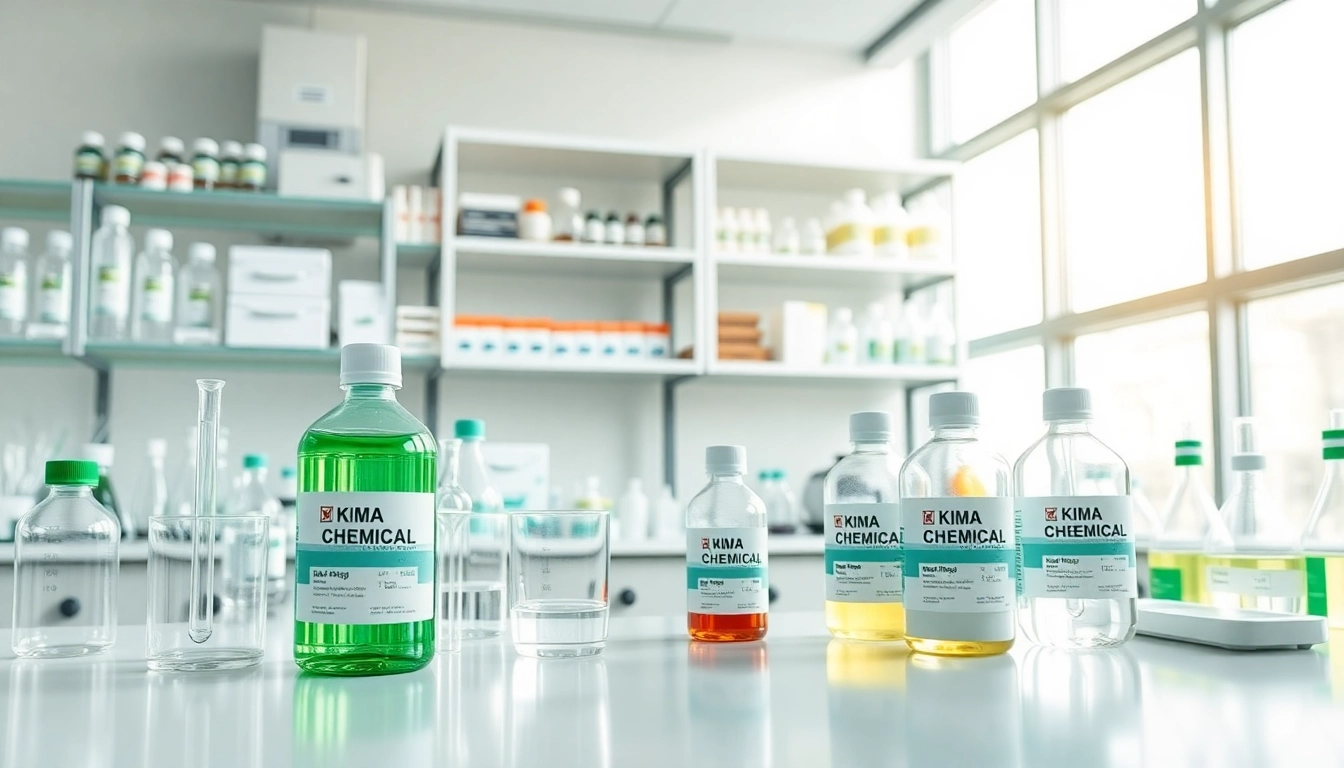Understanding Infusion Resins and Their Applications
What are Infusion Resins?
Infusion resins are specialized materials used in the vacuum infusion process, a method widely employed in composite manufacturing. They are designed to flow easily into dry fibrous reinforcement materials, allowing for the creation of strong and lightweight composite parts. The unique chemical composition of infusion resins typically results in low viscosity at room temperature, which facilitates uniform distribution throughout the reinforcement matrix. This characteristic is essential for achieving the desired strength and performance in applications ranging from aerospace components to marine vessels and beyond.
In essence, infusion resins are crafted to enhance the properties of the composites they help create. These resins can vary in terms of curing times, mechanical properties, and chemical resistance, making them suitable for a wide array of industrial applications.
Key Applications in Composite Manufacturing
The application of infusion resins spans multiple industries, each benefiting from the material’s inherent qualities. Here are some of the primary fields where infusion resins are extensively used:
- Aerospace and Automotive: Infusion resins are crucial in manufacturing lightweight and high-strength structural components for aircraft and automobiles, which enhance fuel efficiency and reduce overall weight.
- Marine: Used in the construction of boats and yachts, infusion resins provide excellent mechanical strength and resistance to environmental factors, ensuring longevity and durability in harsh conditions.
- Wind Energy: The wind turbine blades often utilize infusion resins for their remarkable strength-to-weight ratio, which is vital for cost-effective energy production.
- Sports Equipment: High-performance sporting goods, including bicycles and surfboards, leverage infusion resins for their lightweight properties, contributing to better performance.
Benefits of Using Infusion Resins
Infusion resins offer a myriad of advantages that make them a preferred option in composite manufacturing. Some of these benefits include:
- Enhanced Mechanical Properties: Infusion resins contribute to the creation of composites with high tensile strength, impact resistance, and durability, which are essential for critical applications.
- Cost-Effective Production: The infusion process allows for the manufacturing of large parts with minimal waste, leading to lower production costs.
- Improved Work Environment: The infusion process requires less volatile organic compounds (VOCs), making it a safer option for workers compared to other resin applications.
- Versatility: Infusion resins can be tailored for various applications by altering their formulations, making them suitable for a broad range of performance requirements.
Choosing the Right Infusion Resins for Your Project
Factors to Consider When Selecting Infusion Resins
When selecting infusion resins for a project, several factors should be carefully evaluated to ensure optimal results:
- Curing Time: The time required for the resin to cure can significantly impact production schedules. Fast-curing resins may suit time-sensitive projects, while longer cure times might benefit operations that require more detailed processing.
- Viscosity: The viscosity of the resin affects its ability to wet out the reinforcement materials. Low-viscosity resins are generally preferred, as they facilitate better flow and minimize voids.
- Mechanical Properties: Depending on the application, the required mechanical strengths such as tensile and flexural strength should be considered to ensure that the end product meets performance specifications.
- Aging and Environmental Resistance: It’s essential to determine how the infusion resin performs under various environmental conditions, including exposure to UV light, chemicals, and moisture.
Common Types of Infusion Resins
There are various types of infusion resins available, each with specific formulations catered to distinct applications. Some prevalent types include:
- Epoxy Resins: Known for their excellent adhesion and mechanical properties, epoxy resins are commonly used in advanced composites.
- Polyester Resins: These resins are cost-effective and widely used for marine and automotive applications but may have lower mechanical properties compared to epoxies.
- Vinyl Ester Resins: Offering a balance between the cost of polyester and the performance of epoxy, vinyl esters are popular in applications requiring corrosion resistance.
Matching Infusion Resins to Specific Applications
Finding the right infusion resin is paramount for the success of any composite manufacturing project. Here’s how to match specific resins to your requirements:
- For marine applications, consider using vinyl ester resins for their excellent resistance to water and chemical degradation.
- Aerospace projects typically benefit from high-performance epoxy resins due to their superior strength and weight-to-ratio.
- In automotive manufacturing, polyester resins may be suitable for components that do not require the highest performance, enabling cost efficiency.
Process of Using Infusion Resins
Step-by-Step Guide to Infusion Resin Application
The infusion process involves several critical steps to ensure a successful outcome:
- Preparation: Clean and prep the mold or workspace. Ensure all surfaces are free from debris or contaminants.
- Layup of Reinforcement Material: Place the dry reinforcement materials into the mold while ensuring that they are properly positioned.
- Vacuum Bagging: Seal the mold with a vacuum bag to create a controlled environment for the resin infusion.
- Resin Mixing: Prepare the infusion resin by mixing it according to the manufacturer’s specifications, ensuring to follow the required mixing ratios.
- Infusion Process: Introduce the resin into the system via a port; the vacuum will draw the resin through the reinforcement materials.
- Curing: Allow the resin to cure as specified by the product guidelines before demolding.
Best Practices for Handling Infusion Resins
Handling infusion resins requires attention to detail to avoid issues during application:
- Personal Protective Equipment (PPE): Always wear the appropriate safety gear, including gloves and respirators, to protect against harmful chemicals.
- Storage Conditions: Store resins in a cool, dry place away from direct sunlight or extreme temperatures to prevent degradation.
- Accurate Measurement: Use precise measuring tools when mixing resins to ensure that the proper ratios are maintained for optimal performance.
Common Mistakes to Avoid in Infusion Resins Applications
There are several pitfalls that can diminish the quality of the final product:
- Inadequate Vacuum: Ensure that a proper vacuum is maintained to avoid the introduction of air bubbles, which can compromise the structural integrity of the composite.
- Incorrect Mixing Ratios: Deviating from the resin’s recommended mixing ratios can lead to improper curing and decreased mechanical properties.
- Insufficient Curing Time: Rushing the curing process can result in premature demolding and structural weaknesses in the finished component.
Performance Metrics for Infusion Resins
Evaluating the Quality of Your Infusion Resins
To ensure the best performance from infusion resins, quality evaluation is essential. Key performance metrics include:
- Tensile Strength: The ability of the composite to withstand forces being pulled apart.
- Flexural Strength: Indicates how much bending strength the composite can endure without failure.
- Impact Resistance: Measures the ability of the resin-infused composite to withstand sudden impacts without cracking or breaking.
Testing and Quality Control Measures
Implementing rigorous testing protocols can help maintain high standards:
- Mechanical Testing: Conduct tensile, flexural, and impact tests to validate the performance of the infused composite.
- Visual Inspection: Regularly inspect molds and finished products for defects or inconsistencies.
- Documentation: Maintain records of all tests and evaluations to track performance over time and make data-driven decisions for improvement.
Documenting Performance for Projects
Documentation is a critical aspect of quality assurance:
- Log all performance metrics and results from testing to establish benchmarks for future projects.
- Provide thorough reports for clients that detail the material properties and expected performance of the infused composites.
- Utilize data to inform design changes and material decisions in ongoing or future projects.
Future Trends in Infusion Resins
Innovations in Infusion Resin Formulations
As the field of composite manufacturing continues to advance, innovations in infusion resin formulations are becoming more prevalent:
- Development of bio-based resins that offer sustainable alternatives to traditional petroleum-based materials.
- Improved resin systems that incorporate nanotechnology to enhance strength and thermal resistance.
- Formulations designed to improve processing characteristics, such as self-healing resins that can repair minor damages without intervention.
Sustainable Practices in Infusion Resins
Sustainability is increasingly becoming a focus in the composite manufacturing world:
- Using recycled materials in resin production to minimize the environmental impact.
- Implementing green manufacturing practices to reduce waste, facilitate recycling, and promote low emissions.
The Future of Infusion Resins in Composite Industries
The continuous evolution of infusion resins is likely to lead to even broader applications in various industries due to their adaptability and performance:
- Expanding into new markets such as civil engineering and renewable energy, where lightweight and strong materials are essential.
- Potential integration with smart technologies, allowing for real-time monitoring and feedback on the performance of composite structures.



